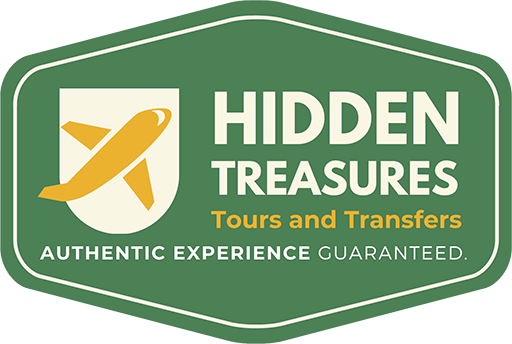Omo valley with an extension to Surma Tribe & Kaffa Region 13 Days
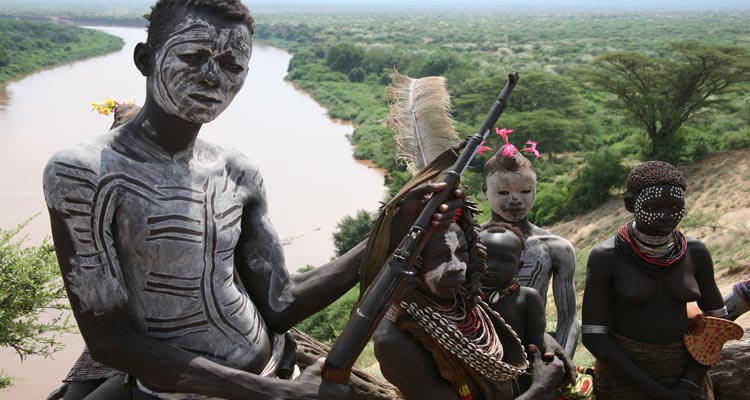
Tour Summary
Come with us on this wild journey that takes you through some of the most remote parts of Ethiopia and to the most incredible tribes in the Omo valley; the Surma; Mursi. Ethiopia is a country that is rich with colourful history, amazing wildlife, breathtaking scenery and fascinating tribal groups that have resisted pressures of the modern world to hold onto their ancient traditions. The Surma tribe is so remote that it can take up to five days to reach them by car, stop at various sites along the way to enjoy the magnificent landscape of Africa with rolling hills and barren deserts. Discover Mago National Park, Ethiopia’s newest nature reserve and home to the Mursi tribe and herds of African Elephants, Grant’s gazelle and Burchill’s Zebra. The Mursi are known for their body scarification and (among the women) the wearing of lip plates. If you’re lucky, you will get the chance to witness the coming of age ritual practiced by this tribe of bull jumping.
Explore Kaffa region- the birthplace Coffee. Here wild Arabica coffee flourishes in the volcanic soils of the forest understory, high on the slopes of the surrounding mountains.
Itinerary
Day 1 – Arrive in Addis Ababa
 Welcome to Ethiopia! Upon arrival in Addis, you will be met and transferred to your hotel. The name of the city, in Amharic, means ‘new flower’. Founded in 1886 by Menelik II, it is located at 2,500 metres above sea level in one of the highest parts of the Entoto mountain chain (3,000 metres above sea level). Addis enjoys an excellent climate all year round, with an average temperature of 25°C. Addis Ababa is a pleasant city with wide avenues of jacaranda trees, interesting museums and one of the largest open air markets in Africa, known as the “Mercato”. This afternoon, you will have a city tour which includes a trip to the Archaeological Museum (where you can meet 3.25 million year old Lucy), the Holy Trinity Cathedral and the Ethnological Museum (the former residence of His Majesty Emperor Haile Sellassie).
Welcome to Ethiopia! Upon arrival in Addis, you will be met and transferred to your hotel. The name of the city, in Amharic, means ‘new flower’. Founded in 1886 by Menelik II, it is located at 2,500 metres above sea level in one of the highest parts of the Entoto mountain chain (3,000 metres above sea level). Addis enjoys an excellent climate all year round, with an average temperature of 25°C. Addis Ababa is a pleasant city with wide avenues of jacaranda trees, interesting museums and one of the largest open air markets in Africa, known as the “Mercato”. This afternoon, you will have a city tour which includes a trip to the Archaeological Museum (where you can meet 3.25 million year old Lucy), the Holy Trinity Cathedral and the Ethnological Museum (the former residence of His Majesty Emperor Haile Sellassie).
Accommodation: Jupiter International Hotel or Similar
Meal Plan: Breakfast& Dinner
Day 2 – Arba Minch
 An early start today, departing at around 07:30, heading down the western side of the Rift Valley passing through Butajira, Hossana and Sodo. It’s a long day’s drive, taking about 8 hours with lunch and coffee stops en route, but it is on a good asphalt road. The scenery is very attractive as you pass down the Rift Valley, on the western side. There are interesting places to be visited en route – the Neolithic site and museum at Melka Kunture, the UNESCO World Heritage Site at Tiya, and the rock hewn church at Adadi Mariam, contemporaneous with the churches of Lalibela.
An early start today, departing at around 07:30, heading down the western side of the Rift Valley passing through Butajira, Hossana and Sodo. It’s a long day’s drive, taking about 8 hours with lunch and coffee stops en route, but it is on a good asphalt road. The scenery is very attractive as you pass down the Rift Valley, on the western side. There are interesting places to be visited en route – the Neolithic site and museum at Melka Kunture, the UNESCO World Heritage Site at Tiya, and the rock hewn church at Adadi Mariam, contemporaneous with the churches of Lalibela.
After Sodo you skirt the western shores of Lakes Abaya and Chamo, the southernmost of Ethiopia’s Rift Valley Lakes, before arriving in Arba Minch, or “40 springs”, and check into Paradise Lodge. The Lodge is situated on a hill overlooking the narrow stretch of forested land, known locally as “the bridge of heaven”, which separates the two lakes.
Distance: 454 kms – approx. 8 hours
Accommodation: Paradise Lodge
Meal Plan: Breakfast& Dinner
Day 3 – Konso & Jinka
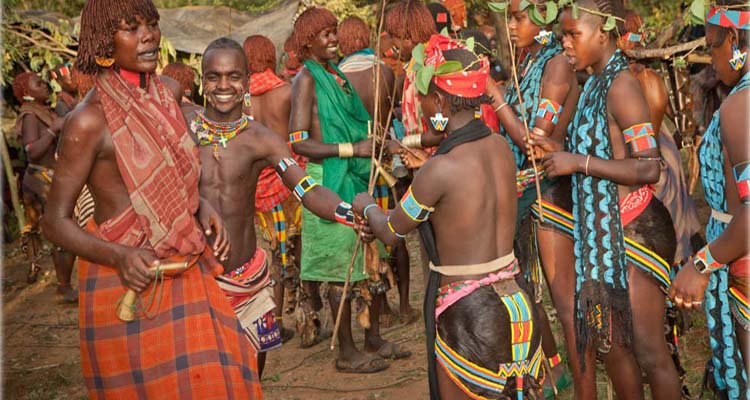 Today, you drive south to Konso, whose people are known for their intricately terraced hillsides, fine woven materials and the carved totems with which they decorate their graves. Konso is a UNESCO World Heritage Site. The Market days in Konso are Mondays, Wednesdays and Thursdays. Pass the Weyto River where you will see a great variety of pelicans and other aquatic birds. On Thursdays there is a very attractive market at Key Afer, frequented by the Bena and Ari people. After your visit, you turn towards Jinka, where the markets are held on Saturdays and Tuesdays. This afternoon oyou could visit the museum in Jinka (not included), which along with various artefacts has a lot of ethnographical information about the people of the Omo.
Today, you drive south to Konso, whose people are known for their intricately terraced hillsides, fine woven materials and the carved totems with which they decorate their graves. Konso is a UNESCO World Heritage Site. The Market days in Konso are Mondays, Wednesdays and Thursdays. Pass the Weyto River where you will see a great variety of pelicans and other aquatic birds. On Thursdays there is a very attractive market at Key Afer, frequented by the Bena and Ari people. After your visit, you turn towards Jinka, where the markets are held on Saturdays and Tuesdays. This afternoon oyou could visit the museum in Jinka (not included), which along with various artefacts has a lot of ethnographical information about the people of the Omo.
Located in southwestern Ethiopia, near the borders of Sudan and Kenya, Jinka is the largest town in the Debub Omo Zone. It serves as an excellent base from which to explore the surrounding area. This remote market town is home to the Mursi people, who are well known for their elaborate lip plates made of clay. At the South Omo Research Center and Museum, visitors can learn more about the Mursi, as well as other groups in the region, through a series of exhibits detailing the cultures and customs of local tribes. Nature enthusiasts will enjoy the nearby Mago National Park, where abundant wildlife finds shelter in the dense acacia woodland.
Distance: 275 kms – approx. 5 hours
Accommodation: Eco Omo Lodge
Meal Plan: Breakfast& Dinner
Day 4 – Jinka
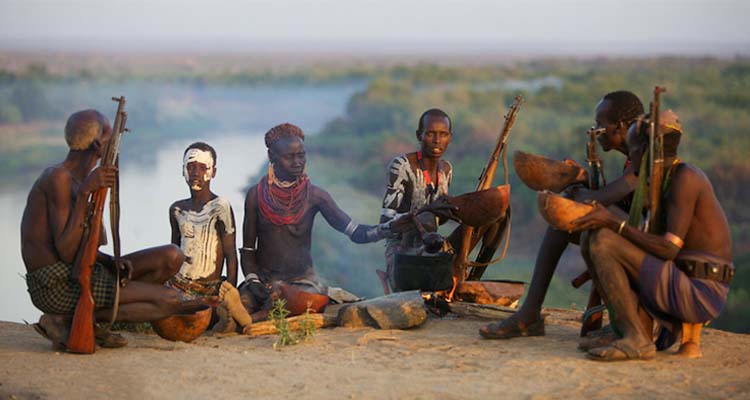 You leave Jinka and drive to the Mago National Park. The park has a variety of mammals and birds, but the animals tend to stay away from the roads and sightings cannot be guaranteed. In the park you may see the following animals: elephant, buffalo, Grant’s Gazelle, Topi and Burchill’s Zebra.
You leave Jinka and drive to the Mago National Park. The park has a variety of mammals and birds, but the animals tend to stay away from the roads and sightings cannot be guaranteed. In the park you may see the following animals: elephant, buffalo, Grant’s Gazelle, Topi and Burchill’s Zebra.
The main attraction in Mago are the Mursi people, so you head to Shembel, the nearest Mursi village and if you wish, you can go further, up the escarpment to the Mursi villages there! The Mursi are known for their body scarification and (among the women) the wearing of lip plates.
Accommodation: Eco Omo Lodge
Meal Plan: Breakfast & Dinner
Day 5 – Jinka – Turmi
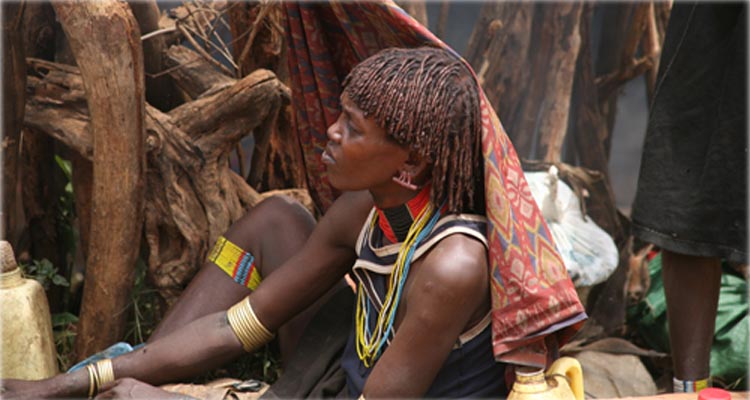 After breakfast at the Eco Omo Lodge, you will depart and begin your visit to the Hamer villages around Turmi. The Hamer are a fine-looking people, both the men and women take great pride in their appearance, shaving and coloring their hair, oiling their bodies and decorating themselves with beads and bracelets worn around their arms and legs. If this visit falls on a Saturday or a Tuesday, you will also visit the market at Dimeke, which is one of the most colorful and interesting in the area. During the time you have in Turmi, if there is a bull jumping ceremony in the vicinity, you will head to see this rite of passage ceremony for young men, marking their transition to adulthood. It may also possible to see Evangadi, or Hamer dancing ceremonies.
After breakfast at the Eco Omo Lodge, you will depart and begin your visit to the Hamer villages around Turmi. The Hamer are a fine-looking people, both the men and women take great pride in their appearance, shaving and coloring their hair, oiling their bodies and decorating themselves with beads and bracelets worn around their arms and legs. If this visit falls on a Saturday or a Tuesday, you will also visit the market at Dimeke, which is one of the most colorful and interesting in the area. During the time you have in Turmi, if there is a bull jumping ceremony in the vicinity, you will head to see this rite of passage ceremony for young men, marking their transition to adulthood. It may also possible to see Evangadi, or Hamer dancing ceremonies.
Distance: 132kms – 3 hours
Accommodation: Buska Lodge OR Similar
Meal Plan: Breakfast& Dinner
Day 6 – Turmi
 After breakfast you will drive to Murule, visiting the Korcho village of the Karo people. Among the people living along the Omo, the Karo excel in face and body painting. You will then head to your lodge in Turmi, the Buska Lodge for lunch.
After breakfast you will drive to Murule, visiting the Korcho village of the Karo people. Among the people living along the Omo, the Karo excel in face and body painting. You will then head to your lodge in Turmi, the Buska Lodge for lunch.
After lunch you will head towards the Omo River to Omo Rate, passing Kangate and the villages of the Bume people, going on to visit the Galeb villages. Here you will cross the river in a local boat and visit the villages on the other side.
Accommodation: Buska Lodge OR Similar
Meal Plan: Breakfast& Dinner
Day 7 – Kibish
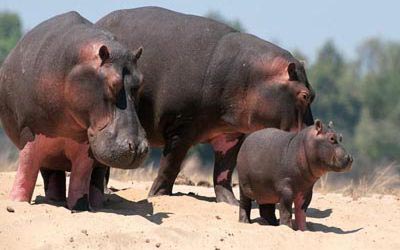 After breakfast you will be transferred to Kibish, which is approximately 140 km, where you will visit the Demeka Market on the way (if the day is Saturday).
After breakfast you will be transferred to Kibish, which is approximately 140 km, where you will visit the Demeka Market on the way (if the day is Saturday).
Distance: 140 kms – 3 hours
Accommodation: Camping, Kibish
Meal Plan: Breakfast, Lunch& Dinner
Day 8 – Kibish
 Following breakfast, you will head around the old Kibish village (14kms round trip) for the visit of more of the Surma villages – to visit and appreciate the very attractive culture of Surma people, they are renowned for the strange custom followed by their women who, on reaching maturity, have their lower lips slit and circular or rectangular clay discs inserted. The Surma men are well known for their stick fighting, which is called Donga. It is extremely rare to witness a Donga.
Following breakfast, you will head around the old Kibish village (14kms round trip) for the visit of more of the Surma villages – to visit and appreciate the very attractive culture of Surma people, they are renowned for the strange custom followed by their women who, on reaching maturity, have their lower lips slit and circular or rectangular clay discs inserted. The Surma men are well known for their stick fighting, which is called Donga. It is extremely rare to witness a Donga.
Accommodation: Camping, Kibish
Meal Plan: Breakfast, Lunch& Dinner
Day 9: Kibish
 Today you will have the chance to explore more Surma Tribe Villages, hopefully witnessing some of their ceremonies & cultural-events. According to the Suri, they came to their present territory near Mount Naita about 200 years ago from the banks of the Nile River. The Surma have a sky god named Tuma. The Suri also believe in spirits and use medicine and undertake sacrifices or prayers and directly send them to Tuma. Another belief of the Suri is the rain maker.
Today you will have the chance to explore more Surma Tribe Villages, hopefully witnessing some of their ceremonies & cultural-events. According to the Suri, they came to their present territory near Mount Naita about 200 years ago from the banks of the Nile River. The Surma have a sky god named Tuma. The Suri also believe in spirits and use medicine and undertake sacrifices or prayers and directly send them to Tuma. Another belief of the Suri is the rain maker.
Piercing and lip plates are a strong part of the Suri culture. At the point of puberty most women have their bottom teeth removed in order to get their lower lip pierced. Once the lip is pierced, it’s then stretched and a lip plate is then placed in the hole of the piercing.
Accommodation: Camping, Kibish
Meal Plan: Breakfast, Lunch & Dinner
Day 10 – Bonga
Today you will depart from Kibish and the Surma Villages, leaving with fond memories of a truly unique way life that is unparalleled to anything you will find in the Western world. You will be driven to Bonga. On the way, we will shortly stop at the Bebeka coffee plantation, where coffee, tea, spices and rubber trees are cultivated and we may learn about the local coffee production.
Distance: 280kms – 7hrs
Accommodation: Local Hotel
Meal Plan: Breakfast & Dinner
Day 11: Full Day in Kaffa Region (The Origins of Coffee)
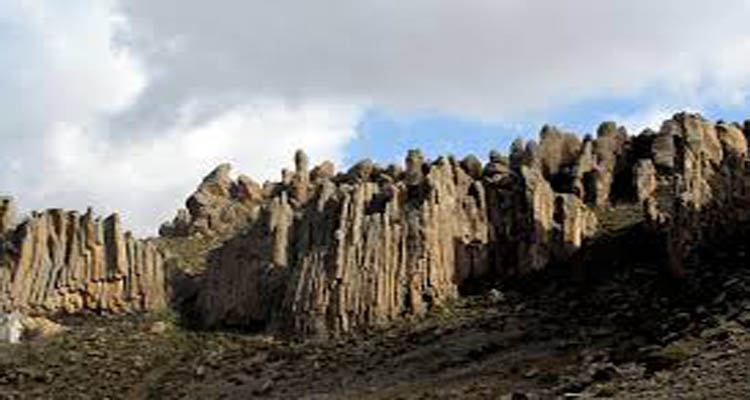 Today we start with an excursion to the Alem Gonna wetlands. An early morning visit not only pays off because of the many bird species and De Brazza monkeys, but also because of the mystical atmosphere created by the landscape shrouded in mist. We walk through the wetland during sunrise and enjoy a freshly prepared breakfast picnic. After a short stop in Bonga, we will go on a short trek to the Barta waterfall (approx. 1h). The waterfall is over 70m high surrounded by basalt walls in the middle of the rain forest. On our way back, we will stop at the house of Mirutse, a local bee-keeper producing here organic forest honey. He will give us some interesting information on bee-keeping and local plants. For those with plenty of energy left after lunch; we have an option of another interesting walk to some hot springs located in the middle of the rain forest (10 km walks back and forth). However, there are also less strenuous options in this incredibly diverse area.
Today we start with an excursion to the Alem Gonna wetlands. An early morning visit not only pays off because of the many bird species and De Brazza monkeys, but also because of the mystical atmosphere created by the landscape shrouded in mist. We walk through the wetland during sunrise and enjoy a freshly prepared breakfast picnic. After a short stop in Bonga, we will go on a short trek to the Barta waterfall (approx. 1h). The waterfall is over 70m high surrounded by basalt walls in the middle of the rain forest. On our way back, we will stop at the house of Mirutse, a local bee-keeper producing here organic forest honey. He will give us some interesting information on bee-keeping and local plants. For those with plenty of energy left after lunch; we have an option of another interesting walk to some hot springs located in the middle of the rain forest (10 km walks back and forth). However, there are also less strenuous options in this incredibly diverse area.
Distance: 361kms- 7hrs
Accommodation: Local Hotel
Meal Plan: Breakfast & Dinner
Day 12: Welsio
After breakfast, we continue to Welsio via Jimma. On the way, we will visit the palace of the former Kafa king Ras Abba Jifar II overlooking the town and the adjacent coffee forests. The palace is a relic of a glorious past when coffee trade gave the king wealth and power. The then economically strong region remained independent from the Ethiopian empire until 1930.
Distance: 361kms- 7hrs
Accommodation: Negash Lodge
Meal Plan: Breakfast & Dinner
Day 13: Addis Ababa- 160 kms- 2:30 hrs drive
Following breakfast we’ll depart Weliso for Wenchi. Wenchi is a highland area, situated 30km west of Woliso. The area is famed for its beautiful mountainous landscape and stunning crater lake. Upon arriving at the lake, you can hike (or take a horse) down to the base of the lake. At the lakeside, we will have lunch and then take a short boat ride out to an old monastery with a church which is situated on one of the lakes islands. After lunch, you will have the option to hike back or else take a horse if you feel like it. Then after, we will head to Addis Ababa. Arrival time back in Addis Ababa will be around 4.00 pm and in the evening you will have a fare well dinner party and then be transferred to airport for your departure.
Distance: 160kms- 7hrs
Meal Plan: Breakfast & Dinner
Request An Offer
Price and Inclusions :
USD 3,298 – Prices are per person based on 2 people travelling together. Prices guideline only, actual price will depend on final itinerary, accommodation choices, and time of year.
Includes
- Airport transfers and road transport around Addis Ababa by private minibus.
- Road transport by standard 4WD with English speaking driver/ guide, including fuel, driver allowances and accommodation.
- Accommodation based on double/ twin room sharing.
- Meal plan Breakfast and Dinner. Full board during camping days
- Fees for entrances, local guides, compulsory scouts and boats for activities mentioned in the itinerary.
- Camping equipment except sleeping bags, cook etc
- All government taxes for the services included in the tour price.
Excludes:
- Domestic flights and visa fees.
- Lunches and dinners, unless stated as included above.
- Activities not mentioned or stated as optional in the itinerary.
- Fees for photos and video.
- Other personal expenses, souvenirs, tips and gratuities, etc
